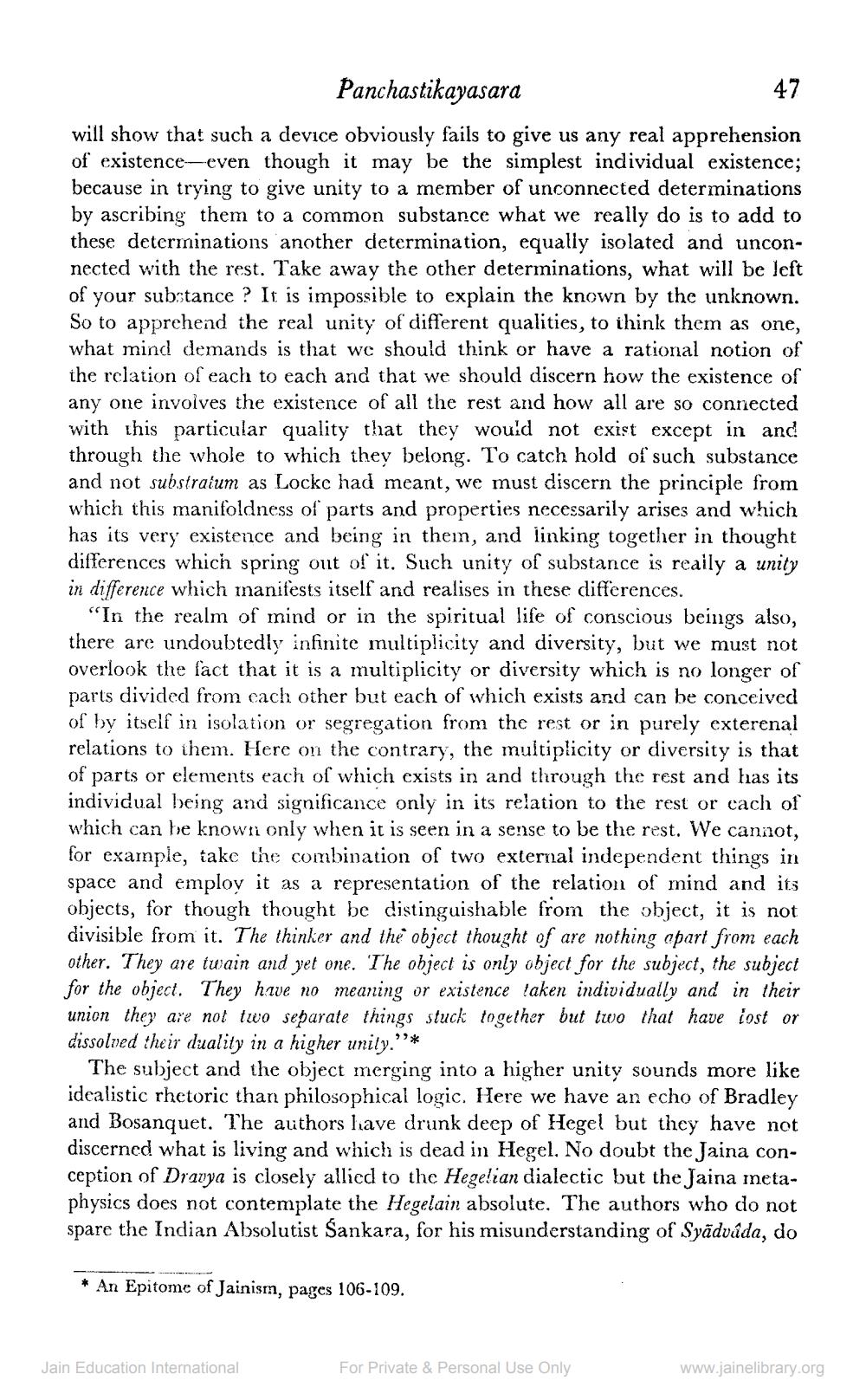________________
47
Panchastikayasara will show that such a device obviously fails to give us any real apprehension of existence-even though it may be the simplest individual existence; because in trying to give unity to a member of unconnected determinations by ascribing them to a common substance what we really do is to add to these determinations another determination, equally isolated and unconnected with the rest. Take away the other determinations, what will be left of your substance ? It is impossible to explain the known by the unknown. So to apprehend the real unity of different qualities, to ihink them as one, what mind demands is that we should think or have a rational notion of the relation of each to each and that we should discern how the existence of any one involves the existence of all the rest and how all are so connected with this particular quality that they would not exist except in and through the whole to which they belong. To catch hold of such substance and not substratum as Lockc had meant, we must discern the principle from which this manifoldness of parts and properties necessarily arises and which has its very existence and being in thein, and linking together in thought differences which spring out of it. Such unity of substance is reaily a unity in difference which manifests itself and realises in these differences.
"In the realm of mind or in the spiritual life of conscious beings also, there are undoubtedly infinite multiplicity and diversity, but we must not overlook the fact that it is a multiplicity or diversity which is no longer of parts divided from cach other but each of which exists and can be conceived of by itself in isolation or segregation from the rest or in purely exterenal relations to them. Here on the contrary, the multiplicity or diversity is that of parts or elements each of which exists in and through the rest and has its individual being and significance only in its relation to the rest or each of which can be known only when it is seen in a sense to be the rest. We cannot, for example, take the combination of two external independent things in space and employ it as a representation of the relation of mind and its objects, for though thought be distinguishable from the object, it is not divisible from it. The thinker and the object thought of are nothing apart from each other. They are iwain and yet one. The object is only object for the subject, the subject for the object. They have no meaning or existence taken individually union they are not two separate things stuck together but two that have lost or dissolved their duality in a higher unily.''*
The subject and the object merging into a higher unity sounds more like idealistic rhetoric than philosophical logic. Here we have an echo of Bradley and Bosanquet. The authors have drunk deep of Hegel but they have not discerned what is living and which is dead in Hegel. No doubt the Jaina conception of Dranya is closely allied to the Hegelian dialectic but the Jaina metaphysics does not contemplate the Hegelain absolute. The authors who do not spare the Indian Absolutist Sankara, for his misunderstanding of Syädváda, do
* An Epitome of Jainism, pages 106-109.
Jain Education International
For Private & Personal Use Only
www.jainelibrary.org




